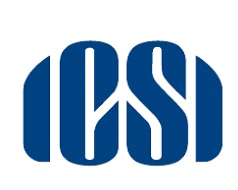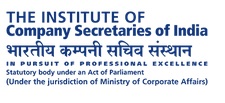ICSI Financial and Strategic Management June Exam Question Paper : The Institute of Company Secretaries of India
Organisation : The Institute of Company Secretaries of India ICSI
Exam : June 2024 Examination
Document Type : Question Paper
Subject : Financial and Strategic Management
Year : 2024
Website : https://www.icsi.edu/exam/previous-year-question-paper/
ICSI June Exam Question Paper
Time allowed : 3 hours
Maximum marks : 100
Total number of questions : 100
Total number of printed pages : 20
1. ‘‘Financial Management is an area of financial decision-making, harmonizing individual motives and enterprise goals,’’ was defined by :
(A) Erza Solomon
(B) Weston and Brigham
(C) S.C. Kuchal
(D) Joshep and Massie

2. Which of the following indicates the two basic aspects of financial management ?
(A) Procurement of funds and utilization of funds
(B) Utilization of funds and ratio analysis
(C) Procurement of funds and ratio analysis
(D) Distribution of profits and ratio analysis
3. Which of the following is an example of unsystematic risk ?
(A) Interest rate hikes
(B) Political instability and flight of capital
(C) A company is forced to recall one of its products
(D) Failure of banks
4. What is the key factor that influence investment decisions ?
(A) Estimation of capital outlays and the future earnings of the proposed project focusing on the task of value engineering and market forecasting
(B) Availability of capital and considerations of cost of capital focusing attention on financial analysis
(C) A set of standards by which to select project for implementation and maximizing returns therefrom focusing attention on logic and arithmetic
(D) All of the above
5. Given data D0== 7, P0 = 50, growth rate = 8.4%, then ke on the basis of dividend growth model will be :
(A) 8.54%
(B) 23.58%
(C) 8.55%
(D) 15.18%
6. Zero Coupon bonds are bonds issued at ……………. and redeemed at par.
(A) Face value to discount
(B) Discount to face value plus premium
(C) Par to discounted value
(D) Discount on face value
7. E Ltd. is considering an investment that will cost Rs.80,000 and have a useful life of 4 years. During the first 2 years, the net incremental after-tax cash flows are Rs.25,000 per year and for the last 2 years, they are Rs.20,000 per year. What is the payback period for this investment ?
(A) 4 years
(B) 3.5 years
(C) 3.2 years
(D) 3 years
8. Payback period is primarily considered as the measure of project’s ……………. rather than its …………………………..
(A) profitability, capital recovery
(B) profitability, liquidity
(C) capital recovery, profitability
(D) capital recovery, liquidity
9. Many companies are forced to reduce spending when they are going to raise additional capital by issuing new debt or equity. This is an example of ……………….
(A) Hard capital rationing
(B) Soft capital rationing
(C) Flexible capital rationing
(D) Internal Capital rationing
10. Management is considering a Rs.1,00,000 investments in a project with a 5 years life and no salvage value. If the total tax paid income from the project is expected to be Rs.60,000 and recognition is given to effect of straight-line depreciation on the investment, the average rate of return (ARR) of the project is :
(A) 12%
(B) 24%
(C) 60%
(D) 30%
11. What is the internal rate of return for a project having cash flows of Rs.40,000 per year for 10 years and a cost of Rs.2,26,009 ?
(A) 8%
(B) 12%
(C) 14%
(D) 10%
12. Which of the following will not suggest for accepting of a project ?
(A) Net present value is greater than zero
(B) Internal Rate of Return is less than the cost of capital
(C) Profitability index is greater than unity
(D) All of the above
13. When operating under a single-period capital rationing constraint, you may first want to try selecting projects by descending order of their ………………. in order to give yourself the best chance to select the mix of projects that adds most to the firm value.
(A) Profitability Index (PI)
(B) Net Present Value (NPV)
(C) Internal Rate of Return (IRR)
(D) Payback Period (PBP)
14. If there is no operating leverage in a firm, it is indicative of absence of :
(A) Operating Profit
(B) Sales
(C) Fixed Cost
(D) Variable Cost
15. Which of the following shows the significance of capital structure ?
(A) Capital structure reflects the overall financing strategy of the firm
(B) One can get a reasonably accurate broad idea about the risk profile of the firm from its capital structure
(C) Capital structure also acts as a tax management tool
(D) All of the above
Instructions for Candidates
1. Candidates should use blue/black ball point pen ONLY to fill-in all the required information in OMR Answer Sheet and this Question Paper Booklet.
2. OMR Answer Sheet cannot be taken out from the Examination Hall by the examinees and the same is required to be properly handed over to the Invigilator/Supervisory staff on duty and acknowledgement be obtained for doing so on the Admit Card before leaving the Examination Hall.
3. Candidates are required to correctly fill-in the Question Paper Booklet Code and the Question Paper Booklet No. (as mentioned on the top of this booklet) in the OMR Answer Sheet, as the same will be taken as final for result computation. Institute shall not undertake any responsibility for making correction(s) at later stage.
4. This Question Paper Booklet contains 100 questions. All questions are compulsory and carry ONE mark each. There will be negative marking for wrong answers in the ratio of 1 : 4, i.e., deduction of 1 mark for every four wrong answers.
5. Seal of this Question Paper Booklet MUST NOT be opened before the specified time of examination.
6. Immediately on opening of Question Paper Booklet, candidates should ensure that it contains 100 questions in total and none of its page is missing/misprinted. In case of any discrepancy, the booklet shall be replaced at once.
7. Each question is followed by four alternative answers marked as A, B, C and D. For answering the questions including those requiring filling-in the blank spaces, candidates shall choose one most appropriate answer to each question and mark the same in the OMR Answer Sheet by darkening the appropriate circle only in the manner as prescribed in the OMR Answer Sheet.
8. Darkening of more than one circle corresponding to any question or overwriting/cutting any answer(s) shall be taken as wrong answer for computation of result. Ticking/marking/writing of answer(s) in the Question Paper Booklet shall not be considered in any circumstance for award of marks. The Institute shall neither entertain any claim nor be liable to respond to any of the query in the aforesaid matter.
9. Rough work, if any, should be done only on the space provided in this Question Paper Booklet.
10. The Copyright of this Question Paper Booklet and Multiple Choice Questions (MCQs) contained therein solely vests with the Institute.

Download Question Paper
Financial and Strategic Management June 2024 Exam – https://www.pdfquestion.in/uploads/pdf2024/42333-q.pdf